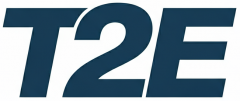Office drama can increase during challenging times, especially after significant events like layoffs. The remaining employees often find themselves burdened with a heavier workload, while performance expectations remain unchanged. This increased pressure has a way of bringing out both the best and worst in people. Some rise to the occasion, fostering teamwork and supporting their colleagues. Others, unfortunately, may engage in toxic behaviors like gossiping, taking credit for others’ work, or stirring up unnecessary drama.
So, how can you navigate these tense situations and manage the challenges of working alongside individuals who put their own interests above the team?
Understanding Office Drama
As much as we might wish to avoid it, office drama is an inevitable reality in many workplaces. It can arise from a variety of triggers, such as organizational changes, increased workloads, or differences in personalities and work styles. While the causes may vary, knowing how to handle office drama professionally and effectively is essential for your well-being and productivity. Left unchecked, workplace drama can lead to stress, decreased morale, and even conflicts that disrupt team dynamics. However, with the right approach, you can navigate these challenges and contribute to a healthier work environment.
Step 1: Identify the Root Cause of Office Drama
The first step in addressing workplace drama is understanding its source. Are tensions fueled by external factors, like layoffs or organizational restructuring, or are they the result of interpersonal conflicts? Taking a step back to evaluate the situation can help you approach it with clarity and focus.
- External Factors: If the drama stems from external pressures, recognize that most of your coworkers are likely feeling overwhelmed. Organizational changes, such as new leadership or budget cuts, tend to create uncertainty and stress for employees. Acknowledging this shared experience can foster empathy and create a more cooperative environment. For example, if workloads have increased due to staffing shortages, consider suggesting ways to redistribute tasks or streamline processes to alleviate pressure on the team.
- Internal Conflicts: For interpersonal disagreements, aim to mediate the situation and encourage open communication. Many workplace tensions arise from simple misunderstandings or differences in expectations. Instead of letting these conflicts escalate, create opportunities for colleagues to share their perspectives and work toward mutual solutions. For example, you might facilitate a one-on-one conversation or suggest bringing in a neutral third party, such as a manager or HR representative, to help resolve disagreements constructively.
By identifying the root cause, you can approach the drama with a clearer perspective and focus on finding appropriate solutions.
Step 2: Focus on Professionalism
When tensions run high, it can be tempting to engage in gossip, vent frustrations, or retaliate against difficult colleagues. However, maintaining professionalism is key to preserving your reputation and contributing to a positive work culture. Your actions set the tone for how others perceive and respond to workplace conflicts.
- Avoid getting involved in office gossip or spreading rumors. Gossip not only escalates drama but also damages trust within the team. Instead, focus on factual and constructive discussions that help address issues rather than fueling them.
- Focus on your responsibilities and lead by example, demonstrating composure and a positive attitude even in challenging situations. For instance, if a colleague is acting confrontational, respond with calmness and redirect the conversation to productive solutions.
- Keep communication respectful and solution driven. If conflicts arise, avoid taking them personally and instead focus on resolving the issue in a way that benefits the team as a whole.
Your professionalism can set a standard for others and help diffuse escalating conflicts, fostering a more respectful and productive environment.
Step 3: Seek Support from Office Drama
Dealing with office drama can be emotionally draining, so it’s important to seek support when needed. You don’t have to handle everything on your own, nor should you feel pressured to resolve every situation independently.
- At Work: Reach out to a trusted colleague, manager, or HR representative for advice or mediation. For example, if you’re facing ongoing tension with a coworker, a manager or HR professional can help facilitate a conversation to address the issue. Sometimes, having a neutral third party involved can help bring clarity and resolution to tricky situations.
- Outside Work: Lean on friends, family, or even a therapist for emotional support and to help maintain perspective. Talking through your experiences with someone you trust can provide much-needed relief and fresh insights.
A strong support system can make a world of difference during turbulent times at the office. Whether it’s a trusted coworker who lends a listening ear or a professional resource like an employee assistance program (EAP), don’t hesitate to seek help when you need it.
Step 4: Set Healthy Boundaries
If you’re finding yourself overwhelmed by workplace tensions, it’s time to establish boundaries to protect your mental health. Setting clear limits can help you stay focused on your responsibilities without getting pulled into unnecessary conflict.
- Limit interactions with individuals who perpetuate negativity or drama. For instance, if a colleague tends to complain or stir up conflict, minimize your exposure by keeping interactions brief and focused on work-related matters.
- Take breaks when discussions about ongoing conflicts become too consuming. Step away for a walk, practice deep breathing, or focus on a task that helps you regain perspective.
- Prioritize your mental health by focusing on your own well-being and avoiding unnecessary involvement in toxic situations. Remember, it’s okay to politely excuse yourself from conversations or situations that don’t serve your best interests.
Boundaries are essential for maintaining your peace and energy, especially when navigating a challenging work environment.
Step 5: Create a Positive Work Environment
Finally, do your part to foster a collaborative and respectful workplace. Small actions can go a long way in promoting positivity and reducing unnecessary drama.
- Offer to help a colleague who seems stressed or overwhelmed. Acts of kindness can build goodwill and strengthen teamwork.
- Stay solution-focused during meetings or discussions, even when tensions are high. Rather than dwelling on problems, encourage brainstorming and collaboration to find constructive paths forward.
- Lead by example. Demonstrate respect, patience, and empathy in your interactions, showing others how to navigate challenges with grace.
Encouraging open communication and teamwork whenever possible helps build an atmosphere that minimizes drama and maximizes productivity. A positive work environment doesn’t happen overnight, but your consistent efforts can contribute to a culture where collaboration thrives and tensions are less likely to escalate.
By understanding the root causes of drama, maintaining professionalism, seeking support, setting boundaries, and fostering positivity, you can navigate and even minimize workplace drama. These steps not only protect your well-being but also help create a healthier, more productive workplace for everyone.
Conclusion
Office drama, while often frustrating and energy-draining, doesn’t have to define your workplace experience. By taking the time to identify the root causes of tension—whether it’s miscommunication, clashing personalities, or unclear expectations—you can address conflicts more effectively and prevent them from escalating. Maintaining professionalism is key; staying calm and composed during difficult situations allows you to respond thoughtfully rather than react impulsively.
Seeking support from a trusted colleague, mentor, or HR professional can also provide helpful perspectives and strategies for resolving conflicts. Setting clear boundaries is essential for preserving your own mental well-being and ensuring that drama doesn’t consume your focus or productivity. Additionally, promoting positivity through small gestures, like offering encouragement or showing appreciation to coworkers, can shift the dynamic of your workplace toward a more collaborative and respectful environment.
At the end of the day, prioritizing your mental health and fostering a constructive work environment will not only help you thrive professionally but also set an example for others to follow. By approaching office drama with grace and resilience, you can inspire those around you to handle challenges with the same level of maturity and positivity, creating a more harmonious and productive workspace for everyone.





